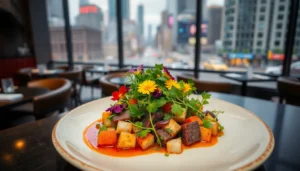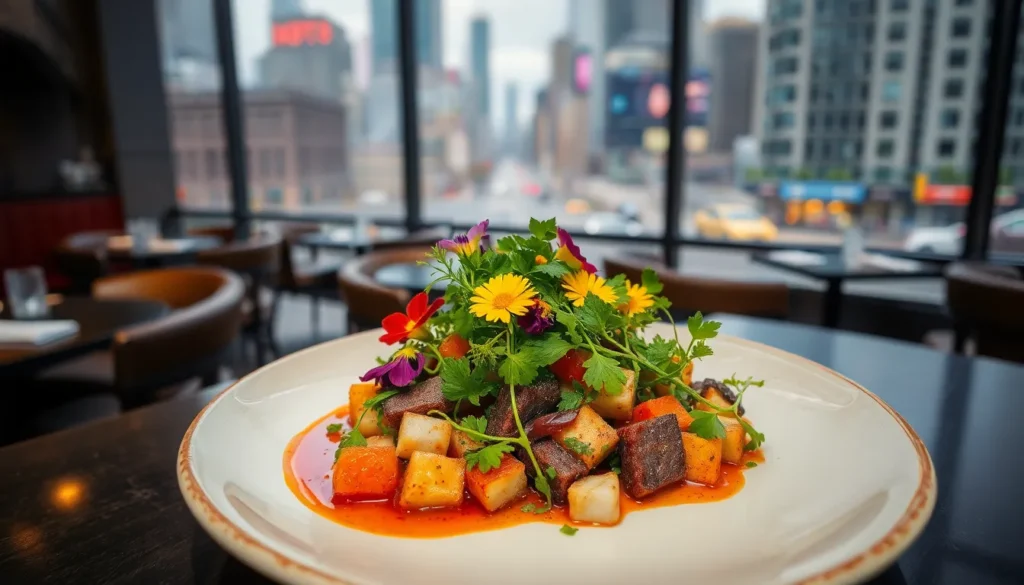Table of Contents
ToggleIn a world where prices can feel like a rollercoaster ride, the search for the perfect balance of quality and affordability can be dizzying. Enter yumkugu, a delightful product that promises to tantalize taste buds without sending wallets into a tailspin. But what’s the scoop on yumkugu price?
Overview of Yumkugu Price
Yumkugu pricing reflects its commitment to quality and affordability. Prices typically range from $5 to $15 per serving, depending on size and location. High demand influences these rates, especially during peak seasons and promotional events. Consumers often find the value in Yumkugu’s ingredients, which contribute to its reputation for delivering a satisfying taste.
Market fluctuations can affect pricing, impacting how customers budget for their culinary experiences. Local competition also plays a role, as nearby eateries may offer similar dishes at varying costs. Evaluating Yumkugu among competitors shows that it often provides a more attractive price point.
Bulk orders might result in discounts, making Yumkugu an appealing option for catering needs. Seasonal specials can lead to temporary price reductions, enhancing the product’s accessibility. Customers may also enjoy loyalty programs or deals through subscriptions, creating opportunities to save money.
Transparency in pricing helps customers make informed decisions. Customers appreciate knowing exactly what they pay for, which builds trust in Yumkugu’s brand. Users can adjust their spending habits based on these clear pricing structures, allowing for a satisfying experience that doesn’t compromise on quality.
Factors Influencing Yumkugu Price


Prices for yumkugu fluctuate based on several key factors that shape the culinary landscape. Understanding these factors helps consumers better navigate their purchasing decisions.
Market Demand
High demand significantly influences the price of yumkugu. During peak seasons, customers flock to restaurants, driving prices upward. Locations with strong popularity often see prices between $10 and $15 per serving due to increased foot traffic. Regular promotions and seasonal specials can temporarily lower prices, attracting a larger customer base. Competitive offerings from nearby eateries also play a role; if similar products are priced lower, it may prompt adjustments in yumkugu pricing to remain appealing. Communities that embrace yumkugu contribute to sustained interest, creating a positive feedback loop between demand and price stabilization.
Production Costs
Production costs form the backbone of yumkugu pricing strategies. Ingredients sourced from local farms typically yield fresher products, but transportation expenses may vary based on distance. Labor costs associated with skilled chefs who prepare yumkugu contribute to overall pricing. Additionally, fluctuations in ingredient availability can cause significant variations; for instance, seasonal vegetables may be cheaper when harvested locally. Restaurants offering yumkugu often reflect these costs in their pricing, balancing the need to maintain quality with affordable options. Strategies aimed at minimizing waste in production further optimize profitability without sacrificing quality.
Comparing Yumkugu Price to Competitors
Yumkugu pricing stands out in the culinary landscape, especially when compared to similar offerings from local eateries. Prices for yumkugu typically range from $5 to $15 per serving, which aligns competitively, particularly in bustling areas. Nearby restaurants often charge between $10 and $20 for comparable dishes, making yumkugu a more attractive option for budget-conscious diners.
Eateries that focus on similar culinary styles can experience significant price fluctuations based on several factors. Although high demand during peak seasons can raise prices, yumkugu maintains affordability through strategic pricing strategies. Discounts offered on bulk orders and seasonal promotions further enhance its competitive edge. A loyalty program also rewards returning customers, providing consistent savings.
Sourcing fresh ingredients locally plays a crucial role in maintaining yumkugu’s quality without inflating costs excessively. While competitors may struggle with rising ingredient prices, yumkugu benefits from partnerships with local farms. Such relationships allow for a reliable supply chain, mitigating some cost fluctuations.
Promotions that capitalize on market demand can create temporary pricing trends. Regularly evaluating competitive pricing helps yumkugu adapt to market conditions effectively. The transparency of yumkugu’s pricing allows customers to make informed choices, ensuring they receive value without sacrificing quality. Overall, when comparing yumkugu to its competitors, it’s clear that consumers find a balance of quality and affordability that enhances their culinary experiences.
Regional Variations in Yumkugu Price
Yumkugu prices exhibit notable differences across regions, influenced by local market dynamics and consumer preferences. Prices typically vary from $5 to $15 per serving, reflecting factors like location, availability of ingredients, and local competition. Urban areas often see higher prices due to increased demand, with servings costing between $10 and $15 in busy restaurants. Rural locations can offer more affordable options, aligning with local economic conditions.
Promotions offered by restaurants also affect regional pricing. Special discounts during local festivals or events create competitive pricing, allowing consumers to enjoy yumkugu at lower costs. Bulk orders frequently result in savings, making it budget-friendly for groups or catering services. Loyalty programs and subscription deals present additional ways for customers to benefit from reduced prices, enhancing long-term customer relationships.
Sourcing practices play a significant role in pricing variations as well. Partnerships with local farms ensure freshness while controlling costs. Seasonal availability impacts yumkugu’s price, particularly when fresh vegetables are scarce. In peak seasons, when demand surges, many regions raise prices, while others may maintain lower prices to attract customers.
Understanding these regional price differences helps consumers make informed choices. Transparency in pricing assures customers that they get value for money. With competitive offerings, yumkugu continues to stand out in the culinary market, balancing quality and affordability while meeting diverse consumer needs.
Yumkugu’s pricing strategy effectively balances quality and affordability in a competitive culinary market. By leveraging local partnerships and maintaining transparency, it ensures customers receive great value without sacrificing taste. The flexibility in pricing based on location and seasonal demand allows consumers to enjoy this delightful dish at accessible rates. With regular promotions and loyalty programs, yumkugu continues to adapt to market changes, making it a preferred choice for those seeking both satisfaction and savings. As it evolves, yumkugu remains committed to enhancing the dining experience for everyone.










